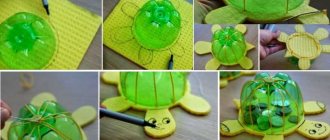What does it mean to develop fine motor skills?
Fine motor skills are the ability to reproduce precise movements with the hand and fingers. This is important not only for developing beautiful handwriting, we must also remember that the phalanges of the fingers are the main tools in the work of representatives of many professions. The development of fine motor skills in children aged 6-7 years is facilitated by drawing, playing musical instruments, working with plasticine and small construction sets. But the greatest effect is obtained as a result of special classes.
The exercises offered to children help develop accuracy and speed of movement. As a result of their implementation, the hands and fingers will become stronger, flexible and mobile. There are three types of such tasks:
- exercises with small objects;
- graphic tasks;
- finger games.
In light of preparing for school, the greatest attention should be paid to completing graphic tasks. Children must learn to hatch and draw lines of different thicknesses and shapes. At the same time, it is necessary to ensure that they draw lines without lifting the pen from the paper, do not go beyond the designated contours, do not leave spaces, perform movements correctly (from top to bottom, left to right), do not turn the notebook, and sit correctly at the table.
Classes to develop fine motor skills of the hands should be carried out regularly, studying for 10 - 20 minutes a day. Monotony and monotony should not be allowed; during the lesson, children should be offered several different exercises with exciting game content. To do this, the teacher and parents are invited to use a card file of exercises for the development of fine motor skills in children 6 - 7 years old.
Development of fine motor skills in children
Exercises after 3 years
Beads and cereals
This category includes games with small objects. It can be anything - beads, beads, various cereals, etc.
You can start with larger items. For example, large beads that a child will play with great interest in his hands.
Another option is cereals. Pour buckwheat or other cereal into a bowl and give it to your baby. He will touch it, roll it in his fingers. In this way, children develop tactile sensations and fine motor skills well.
You can add some kind of goal to these activities. For example, pour buckwheat onto the table and ask your child to separate the black grains from normal buckwheat. You can also ask him to sort the beads by color.
Screwing and unscrewing lids
Developing fine motor skills by screwing or unscrewing bottle caps (it’s better to choose different sizes) is a good exercise for developing dexterity in children’s fingers.
A similar effect is achieved by unfastening and fastening zippers and buttons. In addition, this way the child quickly learns to be independent. You can gradually develop in your child the understanding that he must button his own jacket, lace his shoes, etc.
Modeling
It is suitable for children of different ages. You can use different materials - plastic dough, plasticine, clay. Try to add variety to your classes every time. For example, if at first you just give your child plasticine, and he tries to mold something out of it, then later you can add some objects to the lessons and tell your child to stick plasticine around them. Handprints and various objects can be made from clay.
Parents can be advised to take their child with them to the kitchen when you want to bake something. Let your baby work with the dough, knead it with his hands, but be careful and remove all sharp objects.
Sand games
There are many different variations possible here. The child can draw with his finger in the sand, you can hide some objects and ask the child to find them in the sand. Such activities are only suitable for children over 3 years old, because young children put everything in their mouth.
Drawing, cutting, puzzles, construction sets
Cutting out figures and various objects from paper has an extremely beneficial effect on the development of fine motor skills. Here you need to start with something simple (cutting out shapes with straight lines) and move on to something more complex (cutting out shapes with curved lines, snowflakes, etc.). Carving is also useful because it develops spatial perception.
The same goes for drawing. At first, you can simply give your child a felt-tip pen and full scope for creativity. Then ask him to complete the missing part of the drawing, draw a line along the contours, etc.
Construction sets and puzzles not only develop fine motor skills, but also have a beneficial effect on a child’s imagination, memory and creativity. In addition, the baby develops patience and perseverance. There are a large number of options on sale for children of different ages.
Graphic tasks
Most of these tasks are performed on prepared cards. You can purchase special notebooks, copybooks, and coloring books.
Outlines
The card contains the outlines of objects and a pattern of shading (vertical, horizontal, oblique). The direction of the lines is indicated.
Children need to shade the drawings, trying not to go beyond their contours and make even spaces between the lines.
Rain
The picture shows clouds and flowers below. Children are asked to water the flowers so that they do not wilt. To do this, they need to draw lines. This task can be performed several times, each time offering a picture with different types of lines.
Waves
You need to circle the boat and draw waves on the water. Please note that the lines are of different types (straight and curved).
Fish
You should complete the lines of the fins and scales.
Patterned shading
The card contains examples of curly lines. Children must place a pencil on a dot and draw a line to complete the patterns. The main thing is to try not to lift the pen from the paper until the line is completed.
Complete the drawing
Children will enjoy completing tasks to complete the pictures:
- complete the cage for the tiger cub;
- complete the pyramid, shade every second ring;
- complete the butterfly, etc.
Connect the dots
It is necessary not only to draw lines in the desired direction, but to draw the grass near the house by connecting the dots in pairs. In a more complex version, it is proposed to connect all the points with one line.
Develop your eye
In such tasks, you need to try to draw lines between objects yourself. At first, children are given easier tasks when they need to draw arched curved lines. It is much more difficult for children to draw straight lines so that they hit the target as accurately as possible.
- help the bunny jump over the bumps;
- hit the ball in the basket;
- help restore the volleyball net;
- hit the target in the shooting range.
- Draw with pressure
- In this task you need to perform shading using the correct pressure:
- shade the clouds so that one is darker and the other is lighter;
- shade the glasses - one with water (it’s almost transparent), the other with juice (much darker);
- Shade the leaves, making them different in color intensity.
Repeating the pattern by cells
For such a task, cards lined in a cage are prepared. At the beginning of the line, the “rhythm” of the pattern is set, which you need to repeat independently until the end of the line.
Graphic dictations
You can invite children to perform graphic dictations on checkered cards. In such tasks, the number of cells and the direction of movement of the line are indicated. If the dictation is completed correctly, an image of some object appears on the card. Read more about How to conduct graphic dictations in kindergarten.
Games with scissors to develop children's fine motor skills
- The first step for little ones when working with paper is to tear napkins and paper . And also - bend the paper without tearing.
- Next: try cutting paper of different thicknesses and textures with scissors.
- Later you need to learn how to cut a strip of paper with scissors.
- Cut with a zigzag, wave. Here are line simulators for cutting with scissors.
- Cut out the shapes . First squares, rectangles, triangles, then circles and ovals.
- Cutting out templates (print for free), creating appliqués .
- Cutting unusual things. For example, it’s very easy to cut cocktail tubes or plasticine!
- Helping mom in the kitchen. Let's start with the grater. You can grate carrots and potatoes. Very interesting and convenient grate soap (then you can pour it into a container, pour boiling water over it and get liquid soap).
- Cutting food . You can start with a plastic knife and use it to cut greens, for example.
- When moving on to appliqués and using glue, first let your child randomly glue scraps of paper together , without a specific idea. Practice with a glue stick and a glue brush.
Don’t forget about other types of applique: cotton wool, cotton pads, ropes, leaves, flowers, cones, shells, and other natural materials.
Games with objects
Usually young children are protected from playing with small objects. After all, they can put them in their mouth or put them in their ear. However, after 5 years such classes are simply necessary.
Games with sand and granular substances
Children can be given the following tasks:
- pour sand from one container to another;
- pour sand with a measuring spoon;
- sift sand through a sieve;
- finger painting in the sand;
- modeling from wet sand;
- searching for buried small objects in the sand.
The most exciting activity in this series is creating crafts from colored salt.
Games with cereals and seeds
Cereals have a coarser texture than sand. Therefore, they can be used for sorting. To do this, take a handful of cereals or seeds of three different types and pour them into one pile. The child is given three small containers into which he must place the grains. This can be done with your fingers or use tweezers.
In another game, children are asked to determine which grains are by touch. To do this, they are scattered into small fabric bags that are tied tightly. You need to take the bag and, having crushed it in your hands, name the cereal.
You can make pictures from cereals and seeds and create applications on plasticine.
Games with buttons
The buttons are larger. They are also suitable for sorting (by size, shape, color). In addition, buttons can be used to lay out ornaments, paths, lines according to a given pattern, pictures.
take on vector
A very interesting task is to fill in the circles in the picture with buttons, matching them by color.
Games with ropes
Games with ropes and laces are great for developing fine motor skills in children. They can be used for tying and untying knots, braiding or macrame.
The task associated with stringing beads is very useful. It’s better to make these “beads” yourself by cutting cocktail tubes. You can specify the exact number of beads that need to be strung or ask to create a beautiful pattern from them, alternating them by color.
Many games involve lacing. Such tasks can often be found on the pages of educational books made from felt.
Games with paper
When working with paper, offer children the following tasks:
- crumpling and smoothing a sheet of paper;
- folding origami.
A very fun game of creating a planned mess. First, children are asked to tear colored paper into small pieces, and then make colorful rain out of them by throwing them into the air. After the active phase of the game, you need to ask the kids to help collect all the scraps, which is also very useful for the development of fine motor skills. These pieces can be used for torn applique. During this game, invite children to tear paper of different thicknesses (from newspapers to cardboard).
Games with clothespins
The set should contain clothespins of different colors. Also, for such games you need to prepare different templates. You can offer the following tasks:
- attach needles to the hedgehog;
- add rays to the sun;
- do a boy's hair.
Games with clothespins are very popular in math and reading classes, so you can combine these types of activities and ask children to use clothespins to:
- count examples;
- attach the appropriate number of clothespins to the number template;
- indicate the required letter.
Games with matches
Although matches are not a toy for children, they can be used for activities to develop fine motor skills by giving the following tasks:
- moving from stack to stack;
- laying out the figures drawn in the picture from matches;
- folding into a box.
Children love to assemble matches into a cube with a small hole in the center of one of the faces. You can use cotton swabs instead of matches.
Weaving, lacing for the development of a child’s fine motor skills
- The simplest game is a special beautiful lacing toy . But there are other options!
- Make your own lacing toy using our templates. It's simple! Thanks to the large number of pictures and simple execution, homemade lacing toys can be changed very often and thus maintain the child’s interest constantly.
- Yarn wrapping. Cut out a recognizable outline of the object on cardboard. For example, a fungus. And invite your child to color this blank with yarn . It is better to pre-fix the thread on the craft.
- It is very convenient to string large beads not on a thread, but on a soft wire. Is it chenille or chenille sticks, they are often used for children's crafts.
- For the little ones - putting rings on a stick (in ring throwing), for older children - throwing in ring throwing . Then the child’s fine motor skills will be involved, which is also very important!
- Fastening buttons , zippers.
- Lacing on boots . You can use any lace-up boots, not just those bought at a toy store. For example, those that were bought for the baby’s first steps and are already small.
- Putting small dryers on your fingers !
- Making breakfast rings
- Tying a bow . A seemingly obvious skill, but one that is often forgotten or only used in the context of tying shoelaces. Try taking a ribbon and tying it in your hair or making a fluffy bow at your waist. A completely different effect and the child’s enthusiasm is appropriate!
- Braiding hair for dolls and girlfriends, creating other hairstyles.
- Tying knots. Weaving simple baubles from laces.
- Cross stitch on plastic canvas.
Fine hand motor skills in preschool children are the most important vector for the development and preparation of a child for school.
Exciting games for developing a child's fine motor skills
- Pronunciation of logorhythmic poems, poems with movements , finger games. Read more here.
- Games with clothespins . Read more here.
- Pouring water from one container to another. It is especially interesting to pour colored water, gradually turning yellow into green, for example. It is better to pour with a spoon or pipette.
- Pasting stickers . Developing fine motor skills is one of the first benefits of stickers: in order for the sticker itself to come off, all fingers need to be doing their job and be flexible. Fingertips are needed to grasp the tip and peel off the sticker.
- Game with a piggy bank . Fitting a coin through the slot is the most exciting task for a two-year-old. Did you know? You can make a piggy bank yourself from any jar or box by simply cutting a slit in it.
- Sensory bag for babies - easy to make with your own hands.





